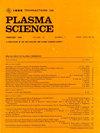Microwave Spark Plug to Support Ignitions With High Compression Ratios
IF 1.3
4区 物理与天体物理
Q3 PHYSICS, FLUIDS & PLASMAS
引用次数: 0
Abstract
Upcoming gasoline engines should run with a larger number of fuels beginning from petrol over methanol up to gas by a wide range of compression ratios and a homogeneous charge. In this article, the microwave (MW) spark plug, based on a high-speed frequency hopping system, is introduced as a solution, which can support a nitrogen compression ratio up to 1:39 in a chamber and more. First, an overview of the high-speed frequency hopping MW ignition and operation system as well as the large number of applications are presented. Both gives an understanding of this new base technology for MW plasma generation. Focus of the theoretical part is the explanation of the internal construction of the spark plug, on the achievable of the high voltage generation as well as the high efficiency to hold the plasma. In detail, the development process starting with circuit simulations and ending with the numerical multiphysics field simulations is described. The concept is evaluated with a reference prototype covering the frequency range between 2.40 and 2.48 GHz and working over a large power range from 20 to 200 W. A larger number of different measurements starting by vector hot-微波火花塞支持点火与高压缩比
未来的汽油发动机将使用更多的燃料,从汽油到甲醇,再到气体,压缩比范围很广,充电均匀。本文介绍了一种基于高速跳频系统的微波(MW)火花塞解决方案,该方案可支持燃烧室中氮气压缩比高达1:39甚至更高。首先,概述了高速跳频毫米波点火操作系统及其大量应用。两者都给出了这种新的基础技术对兆瓦等离子体产生的理解。理论部分重点阐述了火花塞的内部结构,以及如何实现高压产生和高效保持等离子体。详细描述了从电路仿真开始到多物理场数值仿真结束的开发过程。该概念通过一个参考原型进行评估,该原型的频率范围为2.40至2.48 GHz,工作功率范围为20至200 W。大量不同的测量从矢量热- $S_{11}$测量开始,以高温,高压和电荷运动的组合工作场景结束,这是文章的结尾。压力室给出了成功压力试验的极限。压力范围为1至39 bar,充电运动可达25 m/s,温度范围为30°至125°。
本文章由计算机程序翻译,如有差异,请以英文原文为准。
求助全文
约1分钟内获得全文
求助全文
来源期刊

IEEE Transactions on Plasma Science
物理-物理:流体与等离子体
CiteScore
3.00
自引率
20.00%
发文量
538
审稿时长
3.8 months
期刊介绍:
The scope covers all aspects of the theory and application of plasma science. It includes the following areas: magnetohydrodynamics; thermionics and plasma diodes; basic plasma phenomena; gaseous electronics; microwave/plasma interaction; electron, ion, and plasma sources; space plasmas; intense electron and ion beams; laser-plasma interactions; plasma diagnostics; plasma chemistry and processing; solid-state plasmas; plasma heating; plasma for controlled fusion research; high energy density plasmas; industrial/commercial applications of plasma physics; plasma waves and instabilities; and high power microwave and submillimeter wave generation.
 求助内容:
求助内容: 应助结果提醒方式:
应助结果提醒方式:


